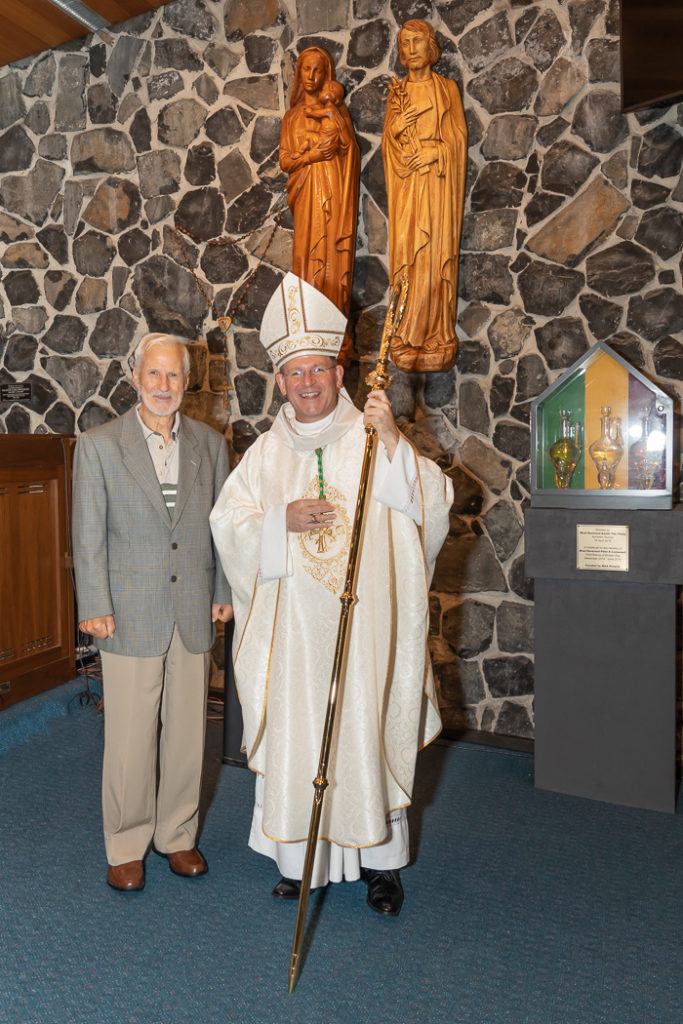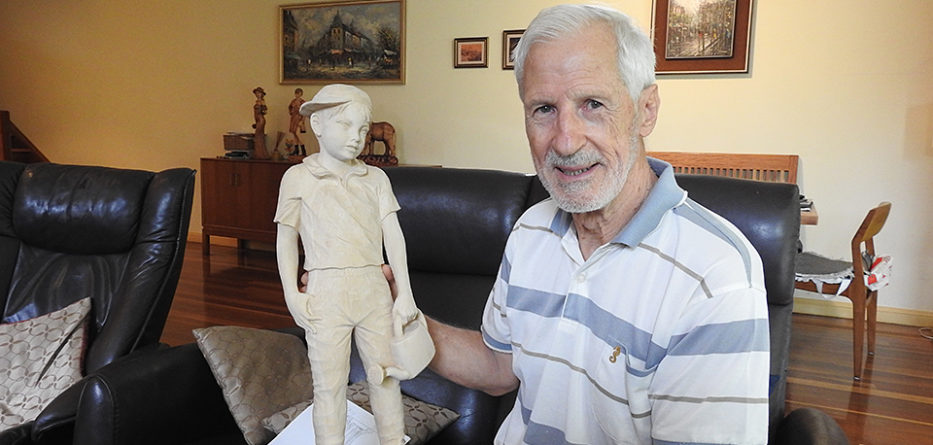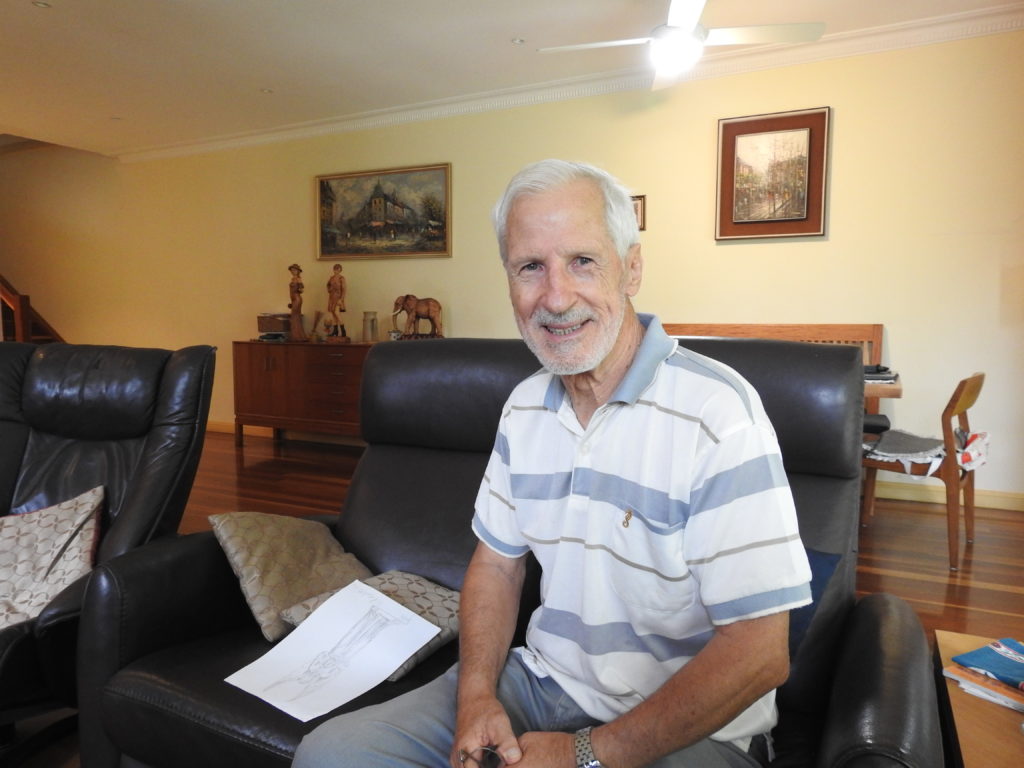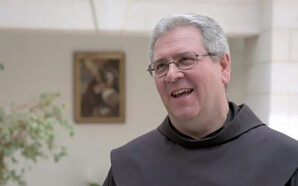In his workshop in Mascot, wood carver Engelbert Piccolruaz is using his mallet and chisel to shape a statue of St Joseph that will be installed in Our Lady of the Rosary Cathedral and blessed by Bishop Anthony Randazzo on the feast of St Joseph on 19 March.
Commissioned by Bishop Anthony, the statue is a gift from the Bishop to the Diocese of Broken Bay in memory of his father Colin and mother Caterina who have both recently passed away.
When Engelbert began wood carving at the age of 12, there were 40 others in his class in the Northern Italian Alpine town of Ortisei learning the craft. Now, over six decades later in his second homeland of Australia, he is the only wood sculptor of his kind working in the country.
If you have visited churches, cathedrals, cemeteries, or schools, of various denominations, chances are you have seen Engelbert’s work. Life-size crucifixes above altars, trumpeting angels atop mausoleums, statues of saints in church alcoves and figures of patrons for school courtyards are his speciality. He carves in wood for indoor works and for outdoor commissions, his wood carving forms a mould from which a bronze statue is cast.
After years of studies and apprenticeships in Italy and Germany under various masters, Engelbert with his wife Isabella migrated to Australia in 1969 and was able to secure a position as a contractor for Pellegrini’s, a major retailer of religious goods at that time. After ten years he set up his own workshop and has worked independently ever since.
Engelbert’s work is prolific in the Catholic Church across many dioceses, but he has also done commissions for the Anglicans, Russian Orthodox and various rites and communities.
“I have done a lot of work for the Maronites – the churches in Punchbowl and Lakemba – many, many statues,” he says.
Isabella brings her skills of business management and negotiation to the administrative side of Engelbert’s work.
“I don’t like talking money, I leave that to Isabella,” says Engelbert. “How can you put a price on my work? I carve a statue from 500 years ripe Huon pine and the statue won’t last a hundred years, but hundreds of years.” He raises his hands in the air and shrugs. Isabella gives me a knowing glance.
Engelbert grew up in a strong Catholic family which was typical of all families in Ortisei at the time. His father was a cabinet maker and his mother a painter.
“My father was very religious. He would never pass the church without going in on the way to and from work.”
The town of Ortisei is steeped in the tradition of wood crafting. Generations of wood carvers, carpenters, painters and artists have lived there and shaped their livelihoods around the craft. Things began to change however with the introduction of machinery to produce items once hand-made on a mass scale.
Working from a hand-carved mould, machines in Italy can churn out replicas from wood blocks at astonishing speed that have the appearance of being hand-carved and are often sold as such. Wooden statues and figurines in tourist shops are mass produced and can be replicated in various sizes at the touch of the button. In Ortisei, the work of dozens of people was replaced by one machine, and then another and another. The income of the town has since turned from wood carving and painting to tourism.
Like many migrants, Engelbert speaks of his birthland with affection and nostalgia, but is grateful and proud to be Australian.
“We never regretted coming to Australia. My children and grandchildren have found opportunity here and I have been able to continue my work.”
Many new churches were built and opened in the decades following the Piccolruaz’s migration to Australia, providing Engelbert with a constant flow of work. During 2020, his work was limited by the COVID-19 pandemic as he was unable to visit schools to discuss commissions.
He laughs while recalling a moment during a visit to his workshop by a group of primary school students. At the time he was carving an earlier statue of St Joseph which he had just begun on a large block of wood. One of the children asked, “How do you know that St Joseph is in there?”
“I hadn’t thought of it like that before. St Joseph may well be inside the wood, but it takes a lot of work and skill to get him out!”
When I ask him if his work is a dying craft he pauses for a moment and then explains how one of his sons was contemplating following in his father’s footsteps, but then realised it would not be a stable enough career path. “There’s nobody here coming after me. Nobody.”
His mood darkens for a moment but then he goes to retrieve several statues of personal works in which he takes pride and delight.
Engelbert recounts the very slow and careful work of transforming a piece of wood into a sculpted creation, one that involves a great knowledge of perspective, proportion and the precise skill of drawing. He shows me sheets of sketches that are the preliminary stages of a three-dimensional sculpture. He names types of wood and their different qualities that make them difficult or easier to work with and the various finishes they produce. He warns against the risk of splitting and how hollows must be made in the wood to allow it to expand and contract in time. He shows me samples of his work, running his large, tanned hands over different grains and stains of wood in the shapes of women, saints and even an impressive elephant.
Engelbert shows me a 50-year-old mallet, his first tool, shaped and smoothed by half a century of use. “My son wants to keep this to remember me when I’m gone,” he smiles.
I ask him what happens if you make a mistake. My question seems shocking and he quickly replies, “You can’t make a mistake!” It is not an option to discard a precious piece of wood and start again.

Sydney wood carver Engelbert Piccolruaz with Bishop of Broken Bay Bishop Anthony Randazzo with a statue of St Joseph that was commissioned for Our Lady of the Rosary Cathedral, Waitara. Image: Broken Bay News/Supplied
It is clear the work of wood carving is an exchange between the artist with his tools, and the shape and form of the wood that is given up in the process. It is a journey of gentle and persistent persuasion that will reveal the hidden secrets of the wood and end in a unique work of art, whatever happens along the way.
“When I work on commissions it is a role of service to the community. I am thinking what they like and what they need to see,” he says. “When I carve for myself, there are no restrictions and I am free to imagine beauty through my own eyes.”
He particularly enjoys carving statues of his grandchildren. He shows me a light wood carving of a cheeky boy with a cap on and says this was how his grandson appeared at the airport and ran towards him. “I wanted to remember that moment!”
The collaboration of Engelbert and Isabella for over 50 years in this humble and beautiful craft has left a legacy to the Church in Australia, one that will be here for generations to come. I suggest the gravity of this valuable contribution to Engelbert, but the concept seems too immense.
“I don’t like to think about it,” says Engelbert.
“I love my work. It is important for me. When I work for the Church I give the people a piece of inspiration. When I create a statue, I don’t create an idol, it’s a piece of art to inspire. Through this beauty they can imagine God.”
Selina Hasham is the Director, Office for Communications of the Diocese of Broken Bay.
Reproduced with permission from the March 2021 edition of Broken Bay News, the news publication of the Diocese of Broken Bay.









